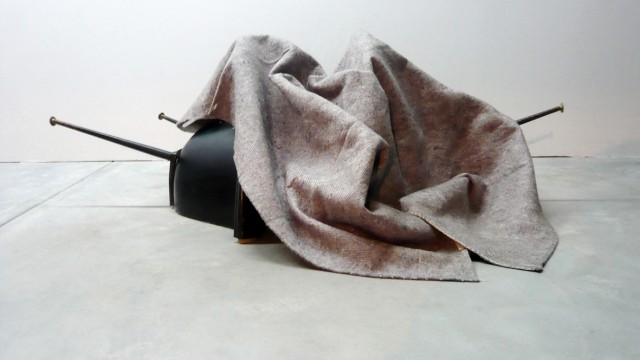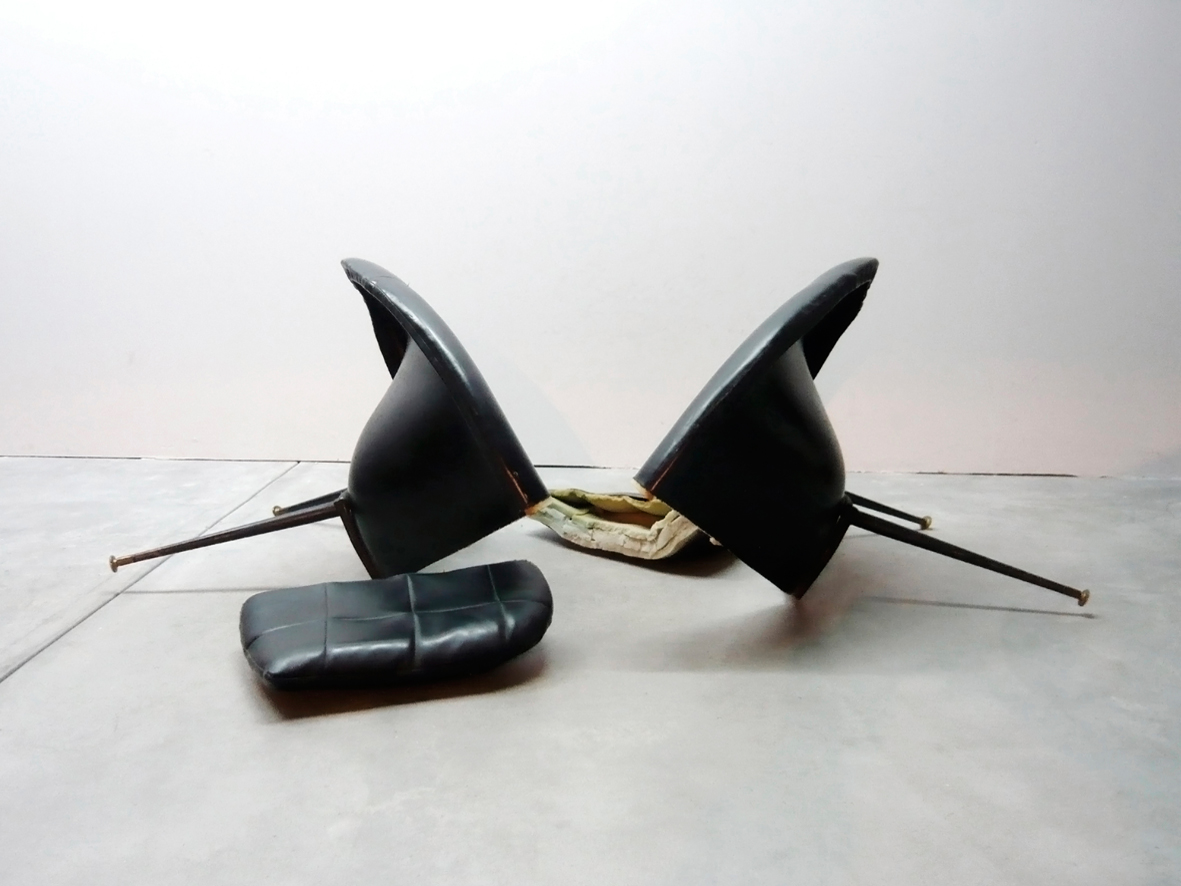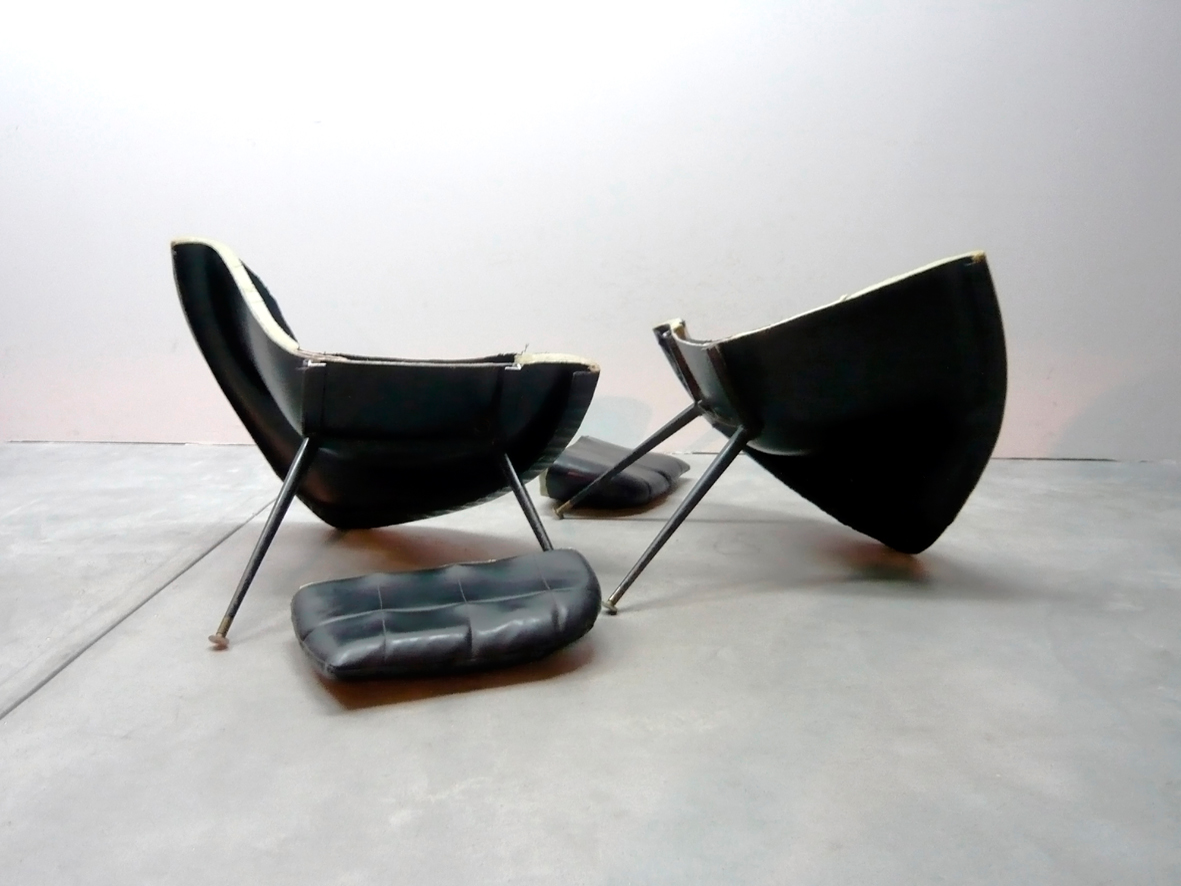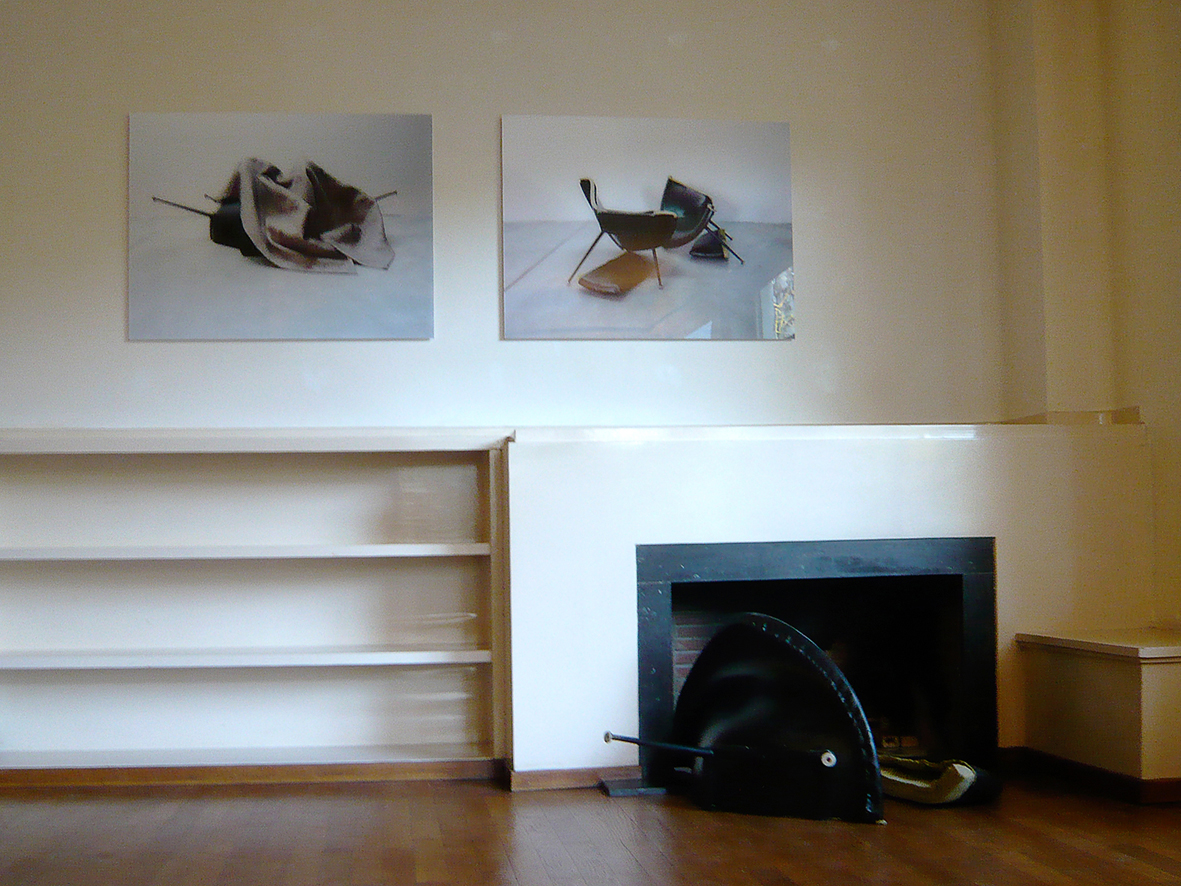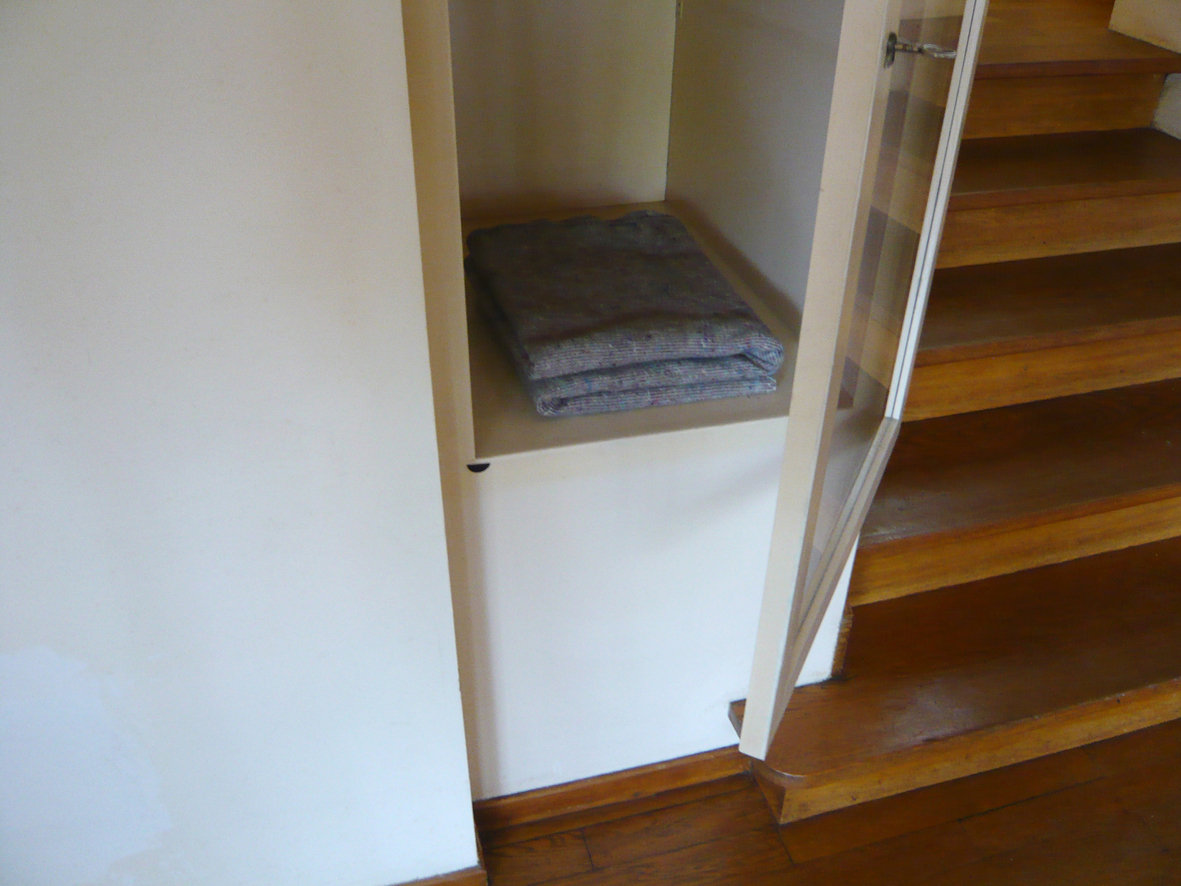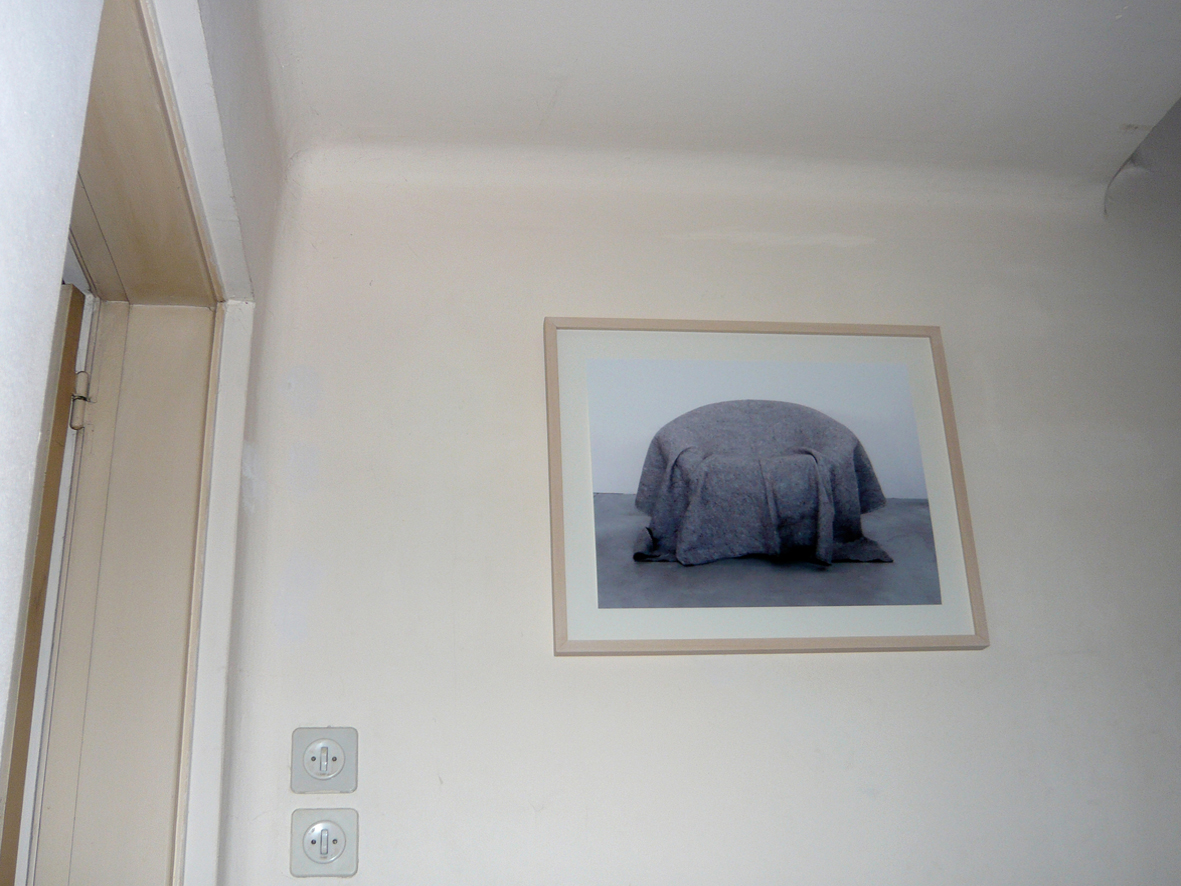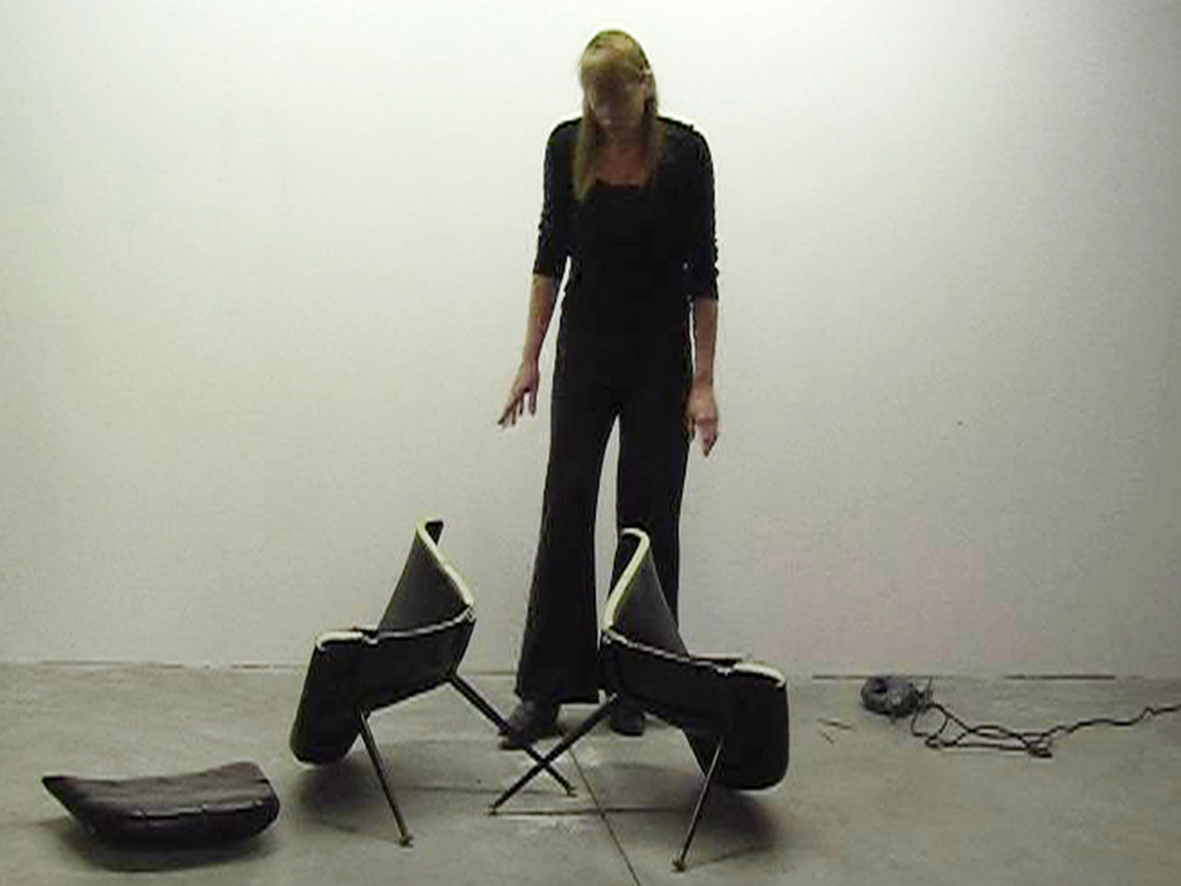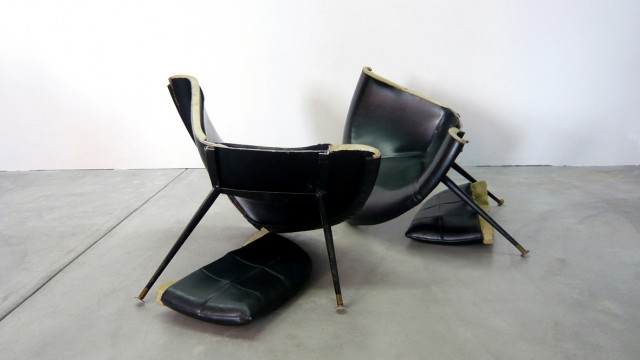
TWINS – Bn PROJECTS
http://www.bnprojects.be/Beatrijs-ALBERS-TWINS
—
http://www.bnprojects.be/Beatrijs-ALBERS-TWINS
TWINS
Bn Projects are particularly proud to invite you to Twins, an in situ project specially conceived by Beatrijs Albers for the space of Maison Grégoire.
http://www.b-1010.be/maisongregoire/spip.php?article8&lang=fr
Everything started with a click, or, to be more precise, with a series of clicks, those by which Beatrijs managed to successfully bid for a 1950’s armchair by the Italian designer Marco Zanuso on a well-known auctions web site.
It had to be an easy bidding, for Beatrijs Albers, who was invited to take part in the 58t exhbition which followed at Brussels-Congrès, the launch of the PARK 58 project (www.park58.be) had a very precise intention: she just wanted to destroy the armchair, to perform the very act of severing this utilitarian symbol of long-gone golden age, cutting it into two identical halves, before carefully reassembling them in a variety of configurations and photographing them.
Beyond the litteral interpretation of the gesture, there are numerous symbolic implications of the performance. In more than a way, they prolong the reflexions and considerations brought about by PARK 58 as a reflexion on the possible utopian and virtual reappropriation of an urban context through a virtual proposal made for a specific building fully emblematic of a period, of a given city planning approach and of the very development of a town, Brussels…
Behind the gesture of symbolic translation carried out by Albers, there is a whole series of questions which are being implicitly raised: the question of our relationship to our modernist heritage, which, although being relatively recent, is nonetheless already threatened.
Then there is, more generally, the question of destruction as an inescapable parameter of the evolution of a city. To which extent and following which approach?
Conversely, one may also be tempted to ask oneself whether the temptation of “monumentalisation”, the symbolic and material reassessment of a banalised element of our daily environment (a parking lot) inevitably imply the adoption of a sort of “romanticized”, “heroical” perspective, the point of view of the other, of the tourist?
Just like the PARK 58 / 58T project, a project which had a long genesis, quite typical of the functioning of the cultural sector in Brussels, Twins can also act as a metaphor for the Belgian capital: an undoubtly rich and stimulating context but whose energies may sometimes get hindered / paralyzed through the somehow rigid dichotomy of its presently compartmentalized institutional structures. Brussels is also a town, a region, which is possibly somehow looking for a new destiny of its own. In a way, this reassembled severed sculpture speaks of all the possible configurations of an urban context, of a society apprehended as the actual decision of living “together”.
Beyond, these issues may also be interpreted as metaphors for the dynamics of the “poiesis” i.e. of the creative gesture.
Destroying before reconstructing in an infinity of possible reconfigurations is a recurring topos in Beatrijs Albers’s work. The metaphor of the look of the “other” would then become the one of the look of the artist, as a look which does not avoid the destruction or the alteration of a given form / concept to attain the infinite multiplicity of the recreated / reshaped forms.
The translation of the project into the space of the Maison Grégoire provides the project with new specific implications: if this modernist building is somewhat older than the armchair which lies at the base of the sculptural proposals, the house implicitly conveys the same interrogations on these notions of the transmission of forms and volumes, on this idea of reactivation of a given memory and heritage. And this all the more since there is already a multifunctional use of the building which presently acts simultaneously as a residence, an office and an arts centre
To bring back this transmuted armchair, “the-furniture-piece-which-became-a structural-and-sculptural-object” in an interior enhances the question of the founding shift which lies at the basis of the work of art, whilst underlining at the same time the very ambivalence of the notions of interior and exterior of the piece.
The “exhibition” format allows to extend the dynamics of the configurations of the sculpture which, at Brussels-Congrès, was limited to a single picture.
Here at Maison Grégoire, there are no less than 10 “sculptural states” of the severed armchair which are presented, thus allowing the artist’s fascination for the production of multiple forms to exert itself.
The variations are enhanced by differences in size and presentation.
A simple accessoire, a grayish rough cotton blanket is used as a device for further dialectical and expressive revelations / occultations of the sculpture
The very straightforward video of the destruction of the armchair is also presented in an almost confidential way, to complement the presentation of the photographic pictures.
The armchair of TWINS is a way revived, given a new life through its very destruction, or, to be more accurate, through its disarticulation, which translates it into a new functional and semantic operational field.
It also quite literally reminds us of the organic duality of the birth and development of a body through the demultiplicated division of its cells.
In a way, and this might be the highest message the work conveys, it invites us to accept the alienation or the loss of one’s own integrity, one’s arbitrarily fixed identity to attain a state of polymorphous, polysemic and a- or poly-functional freedom…
With the support of the Vlaamse Gemeenschapscommissie.
Emmanuel Lambion
